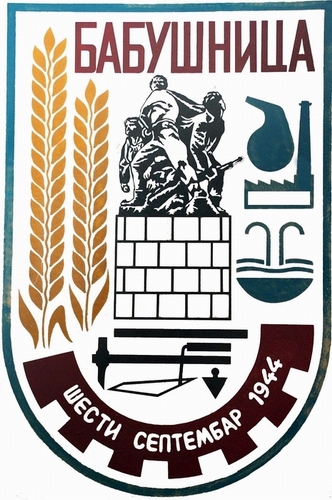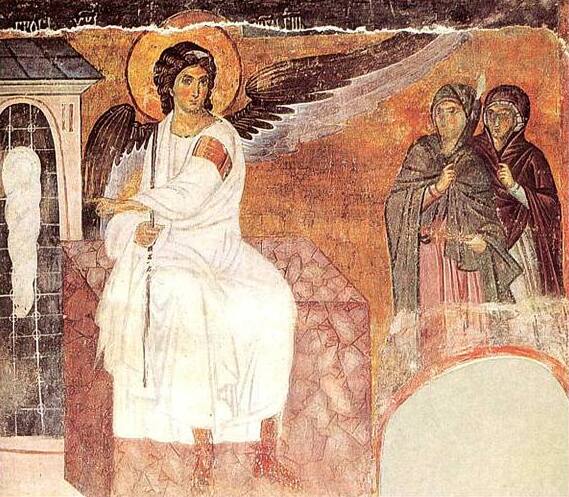|
Miroslav Živković
Miroslav Živković ( sr-Cyrl, Мирослав Живковић; 1934 in Gornje Krnjino – 18 February 2009 in Pirot) was a Serbian naïve art painter.N. Krstić, ''Miroslav Živković'', MNMA, Jagodina, 2009. Biography Živković was born in the village of Gornje Krnjino near Pirot in 1934. He lived and worked in Pirot and died there in 2009. He began painting in 1955. The favorite source of his paintings was the Stara planina mountain near Pirot. He combined inner scenes and fantasy with mountain meadows, glades and forest. Ото Бихаљи-Мерин; Небојша Бато Томашевић, ''Енциклопедија наивне уметности света'', Београд, 1984 Exhibitions The largest collection of his paintings is at the Museum of Naïve and Marginal Art in Jagodina, Serbia. Gallery Živković Miroslav, Ðavolji jahač.jpg, ''The Demon Rider'', n. d.,oil on canvas, 36x57cm(MNMA, Jagodina Jagodina ( sr-cyrl, Јагодина, ) is a Li ... [...More Info...] [...Related Items...] OR: [Wikipedia] [Google] [Baidu] |
Gornje Krnjino
Gornje Krnjino ( sr-cyrl, Горње Крњино) is a village in the municipality of Babušnica, Serbia , image_flag = Flag of Serbia.svg , national_motto = , image_coat = Coat of arms of Serbia.svg , national_anthem = () , image_map = , map_caption = Location of Serbia (gree .... According to the 2002 census, the village has a population of 248 people.Popis stanovništva, domaćinstava i Stanova 2002. Knjiga 1: Nacionalna ili etnička pripadnost po naseljima. Republika Srbija, Republički zavod za statistiku Beograd 2003. References Populated places in Pirot District {{PirotRS-geo-stub ... [...More Info...] [...Related Items...] OR: [Wikipedia] [Google] [Baidu] |
Pirot
Pirot ( sr-Cyrl, Пирот) is a city and the administrative center of the Pirot District in southeastern Serbia. According to 2022 census, the urban area of the city has a population of 34,942, while the population of the city administrative area has 49,601 inhabitants. The city has rich geographical features, including the mountains of Stara Planina, Vlaška Planina, Belava, Suva Planina; rivers which flow through the town, including Nišava, Jerma, Rasnička Reka, Temštica and the Visočica; and four lakes, the Zavoj Lake, Berovacko Lake, Krupac Lake and Sukovo Lake. It also has a rich culture, with notable Orthodox church buildings, including the Church of St. Petka, and the monastery of St. Georges and St. John the Theologian from the late 14th century, both of which display an example of medieval architecture. Pirot is known for its traditional woven carpet, the Pirot carpet (''Pirot ćilim''). Geography The municipality of Pirot covers an area of , with over sev ... [...More Info...] [...Related Items...] OR: [Wikipedia] [Google] [Baidu] |
Serbia
, image_flag = Flag of Serbia.svg , national_motto = , image_coat = Coat of arms of Serbia.svg , national_anthem = () , image_map = , map_caption = Location of Serbia (green) and the claimed but uncontrolled territory of Kosovo (light green) in Europe (dark grey) , image_map2 = , capital = Belgrade , coordinates = , largest_city = capital , official_languages = Serbian language, Serbian , ethnic_groups = , ethnic_groups_year = 2022 , religion = , religion_year = 2022 , demonym = Serbs, Serbian , government_type = Unitary parliamentary republic , leader_title1 = President of Serbia, President , leader_name1 = Aleksandar Vučić , leader_title2 = Prime Minister of Serbia, Prime Minister , leader_name2 = Đuro Macut , leader_title3 = Pres ... [...More Info...] [...Related Items...] OR: [Wikipedia] [Google] [Baidu] |
Naïve Art
Naïve art is usually defined as visual art that is created by a person who lacks the formal education and training that a professional artist undergoes (in anatomy, art history, technique, perspective, ways of seeing). When this aesthetic is emulated by a trained artist, the result is sometimes called '' primitivism'', ''pseudo-naïve art'', or ''faux naïve art''. Unlike folk art, naïve art does not necessarily derive from a distinct popular cultural context or tradition; indeed, at least in the advanced economies and since the Printing Revolution, awareness of the local fine art tradition has been inescapable, as it diffused through popular prints and other media. Naïve artists are aware of "fine art" conventions such as graphical perspective and compositional conventions, but are unable to fully use them, or choose not to. By contrast, outsider art (''art brut'') denotes works from a similar context but which have only minimal contact with the mainstream art world. ... [...More Info...] [...Related Items...] OR: [Wikipedia] [Google] [Baidu] |
Serbian Art
Serbian art refers to the visual arts of the Serbs and their nation-state Serbia. The medieval heritage includes Byzantine art, preserved in architecture, frescos and icons of the many Serbian Orthodox monasteries. In the early modern period, Serbian visual arts began to be influenced by Western art, culminating in the Habsburg monarchy in the late 18th century. The beginning of modern Serbian art is placed in the 19th century. Many Serbian monuments and works of art have been lost forever due to various wars and peacetime marginalizations. Prehistory Currently, Europe's oldest known civilization was discovered in Serbia, namely Lepenski Vir and Vinča culture. In Serbia, Archaeological Sites of Exceptional Importance (Serbia) are numerous and have the highest level of state protection under the Law on Cultural Heritage. See: Prehistoric sites in Serbia and Prehistory of Southeastern Europe for artifacts and sculpture found at the archeological sites of Lepenski Vir. Roman pe ... [...More Info...] [...Related Items...] OR: [Wikipedia] [Google] [Baidu] |
Naïve Art
Naïve art is usually defined as visual art that is created by a person who lacks the formal education and training that a professional artist undergoes (in anatomy, art history, technique, perspective, ways of seeing). When this aesthetic is emulated by a trained artist, the result is sometimes called '' primitivism'', ''pseudo-naïve art'', or ''faux naïve art''. Unlike folk art, naïve art does not necessarily derive from a distinct popular cultural context or tradition; indeed, at least in the advanced economies and since the Printing Revolution, awareness of the local fine art tradition has been inescapable, as it diffused through popular prints and other media. Naïve artists are aware of "fine art" conventions such as graphical perspective and compositional conventions, but are unable to fully use them, or choose not to. By contrast, outsider art (''art brut'') denotes works from a similar context but which have only minimal contact with the mainstream art world. ... [...More Info...] [...Related Items...] OR: [Wikipedia] [Google] [Baidu] |
Stara Planina
The Balkan mountain range is located in the eastern part of the Balkan peninsula in Southeastern Europe. It is conventionally taken to begin at the peak of Vrashka Chuka on the border between Bulgaria and Serbia. It then runs for about , first in a south-easterly direction along the border, then eastward across Bulgaria, forming a natural barrier between the northern and southern halves of the country, before finally reaching the Black Sea at Cape Emine. The mountains reach their highest point with Botev Peak at . In much of the central and eastern sections, the summit forms the watershed between the drainage basins of the Black Sea and the Aegean. A prominent gap in the mountains is formed by the predominantly narrow Iskar Gorge, a few miles north of the Bulgarian capital, Sofia. The karst relief determines the large number of caves, including Magura, featuring the most important and extended European post-Palaeolithic cave painting, Ledenika, Saeva dupka, Bacho Kiro, e ... [...More Info...] [...Related Items...] OR: [Wikipedia] [Google] [Baidu] |
Oto Bihalji-Merin
Oto Bihalji-Merin ( sr-cyr, Ото Бихаљи Мерин; 3 January 1904 – 22 December 1993) was a Serbian writer, art historian, painter and art critic. Biography Bihalji-Merin was born to a Jewish family in Zemun, then an Austro-Hungarian town on the very border with Kingdom of Serbia. After finishing high school he first enrolled at the University of Belgrade to study painting in 1924, before later continuing his studies in Berlin at the Unified State Schools for Fine and Applied Arts (). In Berlin, he started working as an art critic and journalist for magazines ''Illustrierte Neuen Welt'' and later ''Die Linkskurve'', which was a publication formed by a group of left-wing intellectuals. In 1924 Bihalji-Merin joined the Communist Party of Yugoslavia. He returned to Belgrade in 1928 and became a pilot in the Royal Yugoslav Air Force. At the same time, Bihalji-Merin founded the ''Nova literatura'' magazine (1928–29) and the Nolit publishing house together with his brother ... [...More Info...] [...Related Items...] OR: [Wikipedia] [Google] [Baidu] |
Jagodina
Jagodina ( sr-cyrl, Јагодина, ) is a List of cities in Serbia, city and the administrative center of the Pomoravlje District in central Serbia. It is situated on the banks of the Belica (river), Belica River, in the geographical region of Šumadija. The city itself has a population of 34,892 inhabitants, while its administrative area comprises 64,644 inhabitants. Name The town was first mentioned in 1399 as ''"Jagodna"'', derived from the Serbian word for 'strawberry' - ''Jagoda''. From 1946 to 1992 the town was renamed ''Svetozarevo'' ( sr-cyr, Светозарево, ) after the 19th-century Serbian socialist Svetozar Marković. History Early history In the early Neolithic settlement, the world's largest collection of prehistoric artefacts was found, with nearly a 100 manlike figures made of stone, bones and clay, about 8000 years old. Geophysical research in 2012 in the area of Belica, Jagodina, Belica uncovered a prehistoric settlement, surrounded by a circular trench ... [...More Info...] [...Related Items...] OR: [Wikipedia] [Google] [Baidu] |
Naïve Painters
Naivety (also spelled naïvety), naiveness, or naïveté is the state of being naive. It refers to an apparent or actual lack of experience and sophistication, often describing a neglect of pragmatism in favor of moral idealism. A ''naïve'' may be called a ''naïf''. Etymology In its early use, the word ''naïve'' meant "natural or innocent", and did not connote ineptitude. As a French adjective, it is spelled ''naïve'', for feminine nouns, and ''naïf'', for masculine nouns. As a French noun, it is spelled ''naïveté''. It is sometimes spelled "naïve" with a diaeresis, but as an unitalicized English word, "naive" is now the more usual spelling. "naïf" often represents the French masculine, but has a secondary meaning as an artistic style. "Naïve" is pronounced as two syllables, in the French manner, and with the stress on the second one. Culture The naïf appears as a cultural type in two main forms. On the one hand, there is 'the satirical naïf, such as Candide'. ... [...More Info...] [...Related Items...] OR: [Wikipedia] [Google] [Baidu] |
Yugoslav Painters
Yugoslav or Yugoslavian may refer to: * Yugoslavia, or any of the three historic states carrying that name: ** Kingdom of Yugoslavia, a European monarchy which existed 1918–1945 (officially called "Kingdom of Serbs, Croats and Slovenes" 1918–1929) ** Socialist Federal Republic of Yugoslavia or SFR Yugoslavia, a federal republic which succeeded the monarchy and existed 1945–1992 ** Federal Republic of Yugoslavia, or FR Yugoslavia, a new federal state formed by two successor republics of SFR Yugoslavia established in 1992 and renamed "Serbia and Montenegro" in 2003 before its dissolution in 2006 * Yugoslavs, either as citizens of the former Yugoslavia, or people who self-identify as ethnic Yugoslavs * Bosnian-Croatian-Serbian language, with "Yugoslav" proposed in 1861 and rejected as the legal name of the language by a decree of the Austrian Empire People * Jugoslav Dobričanin (born 1956), Serbian politician * Jugoslav Lazić (born 1979), Serbian former professional football ... [...More Info...] [...Related Items...] OR: [Wikipedia] [Google] [Baidu] |




